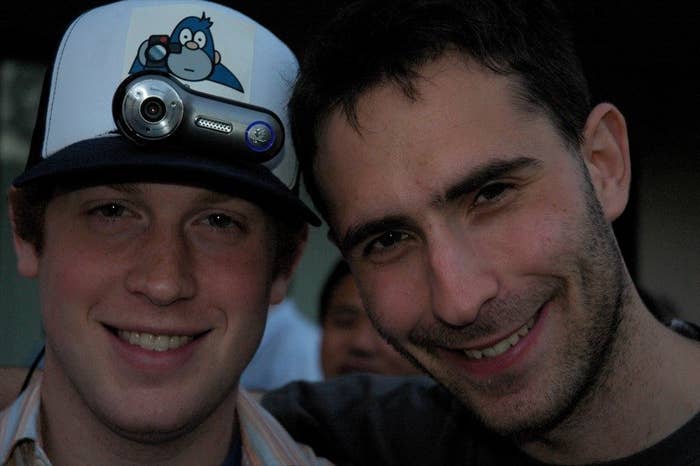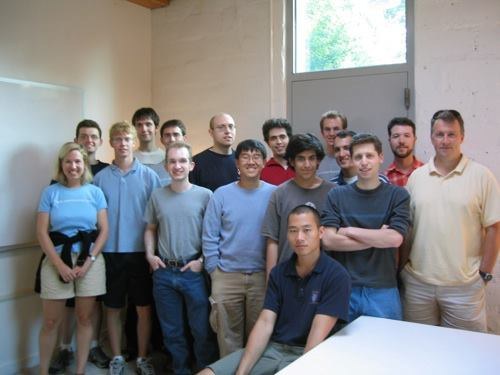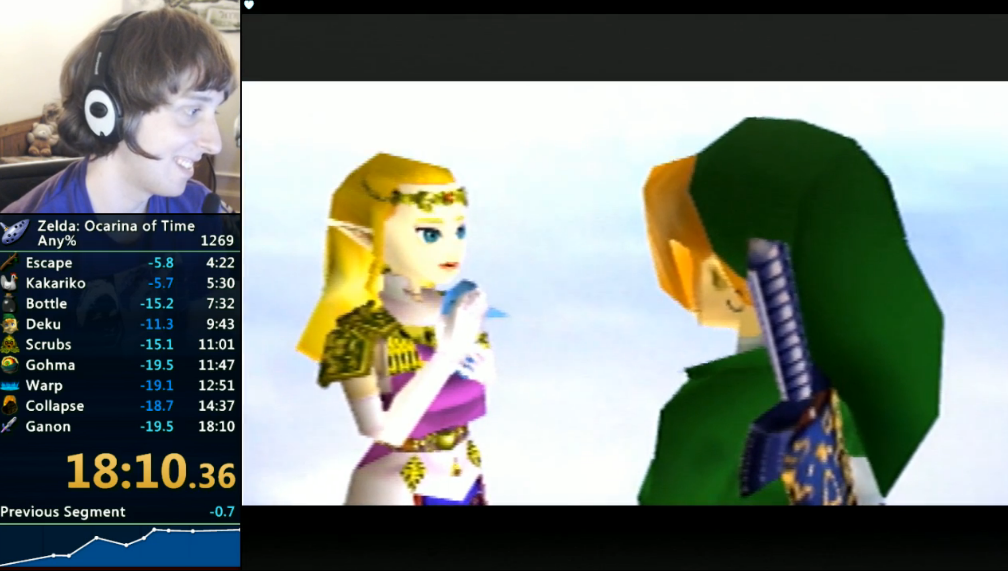
The genesis of Twitch, one of the most popular gaming-related Websites and applications in the world, can be traced to a few informal meetings in the fall of 2010, including one with Gideon Yu.
The former chief financial officer of YouTube, who negotiated that site's $1.65 billion sale to Google and parlayed some of his windfall into a 5% ownership stake in the San Francisco 49ers, came by Justin.tv's offices — which by then had raised $8 million in venture capital and had begun to generate revenue by morphing from a site originally conceived to stream the life of co-founder Justin Kan into a platform where anyone can stream video.
According to Michael Seibel, another Justin.tv co-founder, Yu came in and gave the company the kick in the pants it needed.
"He came by and basically said, 'You guys have got something, it's making some money, but you haven't really made anything of significant impact, so you can sit on your ass and make a salary and not run this like a startup, or you can build something real out," Seibel said.
That meeting, coupled with other conversations like one Kan had with SAY Media's Matt Sanchez, convinced the team to start a few skunkworks projects internally. Taken together, the discussions with Yu and Sanchez marked the start of a process that would eventually morph Justin.tv into two companies with two different missions — Twitch, a site consisting of video streams of people playing video games, and Socialcam, a mobile app for sharing video.
It also marked the beginning of Justin.tv co-founder Emmett Shear's evolution from engineer to executive, an unlikely ascent that transformed Twitch into one of the most valuable video-streaming companies in the world. Now Twitch is among the companies on Google's shopping list, being eyed for a reported price of around one billion dollars. (The company announced Tuesday that it would wind down Justin.tv's operations in order to devote all of its resources to Twitch.)

Childhood friends Shear and Kan both attended The Evergreen School for Gifted Children on the northern end of Seattle. They were bonded by their proficiency in accelerated mathematics and Magic: the Gathering, one of the most famous fantasy-focused collectible card games. (Shear is actually known for playing a persistently frustrating version of the game dubbed "draw-go," in which the player does nothing on their actual turn but has an answer to everything his or her opponent plays.)
Though they went to separate high schools, they worked together as part of a NASA competition and eventually attended Yale together. They began working on their first startup, a Google-calendar like app called Kiko, during their senior year.
There was little evidence at the time of Kiko's founding that Shear would blossom into the leader he is today. He was an expert engineer, a coder who would stay up late into the night fixing the company's ever-changing (and ever-breaking) software. In Silicon Valley parlance, Shear was the "technical co-founder" that is often paired with someone with a good sense for design and product or a strong marketer who can sell a service to the masses. By the time Kiko was sold — on eBay of all places — for somewhere around $250,000, the entrepreneurial itch had taken hold of Shear and Kan.
"I wanted to build internet companies, and by the end of college I knew that," Shear told BuzzFeed. "I entered college thinking I wanted to go into science, but I realized my passion was doing more engineering-oriented things."
Shear and Kan next pitched Paul Graham, founder of prestigious Silicon Valley startup academy Y Combinator, on a service that laid out and printed web content into a physical coffee table book. Graham's response: "What else do you guys have?" That's when the duo pitched the idea of a 24/7 show of Kan's life streamed over the Internet.
Graham's response to this pitch, Kan said, was: "That sounds crazy enough that I'd fund it." They left the meeting with a check for $50,000 and their second acceptance into Y Combinator. (Kiko being the first.)

Shear's engineering prowess was already evident during Justin.tv's early days in 2007, when Amazon called asking them to temporarily limit their bandwidth usage while the company shifted traffic. Amazon had recently launched several services that allowed startups to offload live streaming video and other bandwidth heavy processes onto remote servers for a fee. Amazon's services dovetailed with Justin.tv's move to open its website to allow anyone to live stream video, thus pressuring Amazon's capacity.
While it was meant to be temporary, that move actually pushed the company into buying its own servers and infrastructure to handle live streaming video. The company now operates 15 data centers that handle 55 million unique visitors every month, each of which watches an average of 106 minutes of streaming video a day. In retrospect, the move looks prescient — Twitch now streams video for a fraction of the cost most modern startups pay Amazon for their AWS bills.
"The whole idea of building out a peering network all over the world so they could deliver really high quality video really quickly was a little counterintuitive," said Bessemer Venture Partners' Ethan Kurzweil, an investor in Twitch, adding that Shear realized the importance of service quality and availability and emphasized that from the company's earliest days.
Shear and a few others internally, including Kevin Lin, who would go on to become Twitch's chief operating officer, quickly recognized that video game broadcasting was responsible for a lot of Justin.tv's growth. They were keenly aware of this because they were gamers themselves — Shear had a particular affinity for Warcraft II and Starcraft — and had recognized the potential of broadcasting video game matches over the Internet.
At the same time, Kan and Seibel were noticing another trend: everyone was buying smartphones, and the entire way people would interface with the Web was changing to fit those devices. After those meetings with Sanchez and Yu in 2010, the Justin.tv team decided that they would begin working on two skunkworks projects: a service dedicated to streaming video games called Justin.tv gaming — which would go on to become Twitch — and a mobile app that would go on to become Socialcam.

The deal was that after six months whichever project was gaining the most traction would be the future of Justin.tv. Surprisingly, both projects took off, and the team decided to spin out Socialcam from Justin.tv, with Seibel and a few other engineers taking the lead of that service. Justin.tv, after the meeting with Yu in 2010, morphed into Twitch and officially launched at E3, the gaming industry's largest trade show, in 2011.
Throughout the construction of Twitch, it became clear that Shear was as good at conceiving the products as he was at building them. He noticed, for example, that video quality had to be very high and that the entire service should be built around the needs of broadcasters, two reason why Twitch is so popular among gamers. Attention to those details was quickly embraced by many of the service's initial broadcasters, like Cosmo Wright, a Twitch streamer who holds the world record for beating The Legend of Zelda: Ocarina of Time in the shortest amount of time — 18 minutes and 10 seconds.
With the broadcasters came the audience. Within a year of the site's official launch at E3, Twitch had already attracted 20 million viewers and had rolled out a program that would enable its broadcasters to get paid for their streams as part of its partner program. Twitch's massive audience, highly focused on gaming, was effectively a gold mine for advertisers — which offered a huge opportunity for both Twitch and the players in the program. Twitch.tv had gone from a concept into a tool that enabled gamers to literally play video games for a living, much like Wright began doing in January last year.
"I feel privileged as I was on the site when it was Justin.tv and the timing of it was a lucky part of my success," Wright told BuzzFeed. "Being a content creator on Twitch is actually quite special."
Of course, it hasn't always been easy for Shear and Twitch. Just this week, the company rolled out a tool that would mute old videos that had licensed music playing in the background. Designed to protect the community from getting in trouble with music rights holders, the tool misfired and muted many old videos because it thought the actual video game music was copyrighted — enraging many in the Twitch community. Shear admitted that part was an accident, but it underscored the importance of Twitch's dedication to its community of streamers, many of whom — including Wright — piled on with their complaints on an "ask me anything" Reddit thread.
At first, Shear's approach to management was to do things himself rather than delegate — a byproduct of his engineering acumen. But, according to Kan, "through the transition of coming up with the idea for Twitch and running that small team, and that team growing and growing, he's become a better manager than any of the other founders."
"It was a very dramatic transformation from an introverted engineer to an extroverted person who can motivate a team of 100-something people behind a common goal," said Kyle Vogt, another Justin.tv co-founder who helped build Twitch with Shear in the earliest days.
Shear's enthusiasm for gaming, coupled with his relentless focus on Twitch's community and broadcasters, made partnerships an easy sell – with the pitch being that Twitch was a brand-new, and massive, marketing tool for traditional game developers. Roughly a year after its launch, companies such as World of Warcraft and Call of Duty creator Activision-Blizzard were already using Twitch as a vehicle for showcasing their games. The official Twitch.tv channel for Blizzard's most recent online card game Hearthstone, for instance, garnered a huge audience viewing demonstrations of its newest additions at one point before it rolled out the update, Blizzard CEO and co-founder Mike Morhaime told BuzzFeed. Traditionally, building that kind of hype would require expensive marketing campaigns, but with Twitch it became easier to connect developers with their audience, the actual players that want to know more about the game.
"It was very exciting for us to see Hearthstone shoot right up the charts on Twitch," Morhaime said. "We had about 150,000 viewers at one point watching the game, which I think is a great proxy for level of interest in the content."
Shear has also struck deals to integrate Twitch into Microsoft's Xbox One and Sony's PlayStation 4 game consoles. But perhaps his smartest move was to have his team court advertisers well before Twitch planned on pitching and selling its own ads.
"They were warming up advertisers to the existence of Twitch and what it was, they weren't trying to sell them anything," said Bessemer's Kurzweil. "It doesn't seem like a brilliant strategy but it was really smart — they took an ads sales team in-house last year and I've never seen a sales team work so effectively. The big ad guys knew what it was before they had an opportunity to buy it. That was sort of like, in hindsight, of course you would do that. But that was not obvious at the time."

The community, too, continues to grow beyond competitive games like Starcraft. Twitch is now one of the largest platforms for live-streaming "speed-running," which is basically racing to the ending of a game and competing based on time. Twitch.tv has also become a popular spot for live-streaming Minecraft, a game that is essentially a virtual world filled with Lego-like building blocks. Most recently, Twitch.tv enabled broadcasters to "host" other broadcasts, effectively enabling its user base to have a channel that runs 24/7 whether they are playing games or not.
And the company is still discovering new use cases for its online streaming service, such as "Twitch Plays Pokemon," where the site's chat function was used to input commands for an emulated version of the game. The result: hundreds of thousands of people trying to play Pokemon on the same gameboy. "Twitch Plays Pokemon" ended up spawning a whole subgenre of Twitch.tv streams where viewers are able to collectively play a game. When the company was accepting a Webby award, Twitch vice president of marketing Matt DiPietro's five-word acceptance speech was "praise be to the Helix," a play on a meme the community created while the game was running. The Twitch community's most recent viral oddity, dubbed "Fish Plays Pokemon," began this week with a stream of the game of Pokemon where the character moves based on where a fish is floating in a fish tank.
Though Twitch has become a genuine phenomenon — and potential one billion dollar buyout target — Shear remains humble.
"In the end, we're a website where people can come and watch video and chat and talk about the video," Shear said. "In many ways our business is more similar to Vimeo or Youtube than it is to Activision-Blizzard's. We're more a social network and media company that happens to be focused on exclusively video gaming content."
